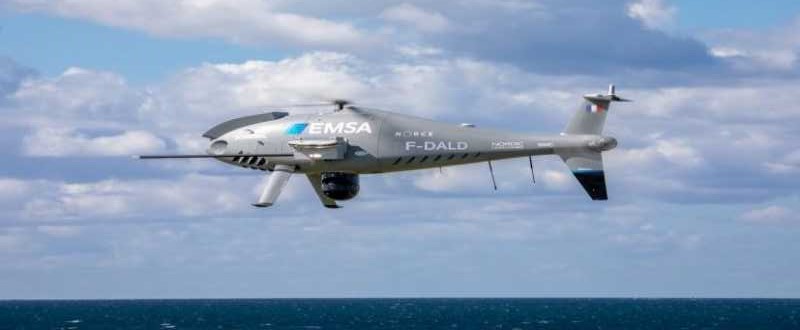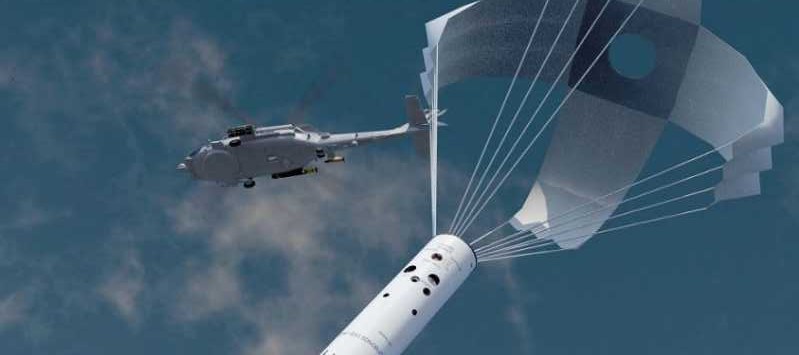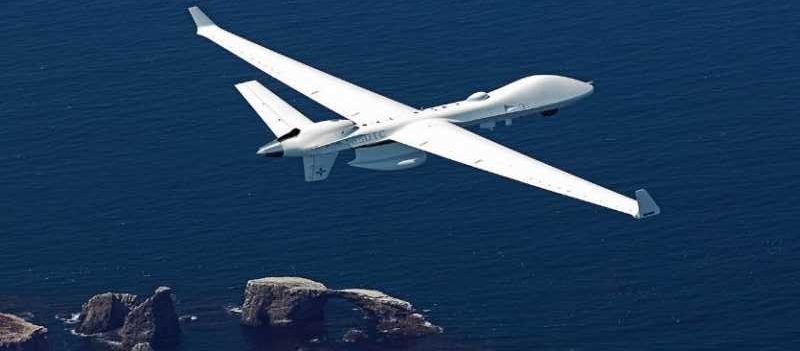 A maritime perspective on whether China and Pakistan are acting either in collaboration or collusion with each other, in waging war against India
A maritime perspective on whether China and Pakistan are acting either in collaboration or collusion with each other, in waging war against India
An armed conflict with China might lead India into a two-front war scenario, involving China and Pakistan, observes Admiral RK Dhowan, PVSM, AVSM, YSM (Retd), the former Chief of the Naval Staff of the Indian Navy. Currently the chairperson of Society for Aerospace Maritime and Defence Studies (SAMDeS), Admiral Dhowan stresses the need for India to maintain a high deterrent posture by the armed forces, and calls for allocating adequate budgetary resources to ensure a timely development of the Navy as a credible and balanced force.
How ready you think India’s Armed Forces are in countering the challenges being posed by China’s PLA across the LAC? What are the chances for such localised conflicts in attaining the dimensions of a battle?
While the Indian Army was engaged in giving a befitting response to flexing of muscles by the PLA (Army) across the LAC, the aircraft and helicopters of the Indian Air Force were deployed from the forward bases and maintained in a high state of alert. The assets of the Indian Navy, in terms of the P-8I Long-Range Maritime Patrol and Reconnaissance Aircraft, and the MIG- 29K fighter aircraft were also deployed in a synergized combat dimension with units of the Air Force and the Army for specific missions along the Northern border. In the Indian Ocean Region, Indian Navy assets were deployed for exercises and specific missions. The Armed Forces of India were ready to counter any challenges or misadventures by China. It is therefore said that two armies by themselves do not go to war, neither do two navies or two air forces. Two nations go to war, and the armed forces of the country have to be united for joint preparation and joint operations to counter any threats, challenges and external aggression.
But, the escalation matrix for two nations to come to blows and engage in war is a gradual and deliberate process. Several institutionalized mechanisms between potential belligerents and world bodies try and prevent its uncontrolled escalation. The seeds of conflict are sown in localised disputes which results in skirmishes and raids, handled at the local commanders’ level. Simultaneously diplomatic engagements, propaganda and informational campaigns are launched to help resolve the conflict. When diplomacy collapses wars happen. A nation’s industrial might, its population, its social and political culture, its economy and its commitment to the cause are vital factors in the decision to go to war.
If such a battle erupts, the onus to protect the country’s maritime interests would be mainly on the Indian Navy. How different would be a war at sea from one across land frontiers?
The country’s quintessential maritime character and vital geo-strategic location in the Indian Ocean are twin factors that define the Indian Navy’s vast maritime interests. The responsibility of protecting these interests falls squarely on the shoulders of men in white uniform. However, the war at sea is uniquely different. Unlike the land frontiers, there is no visible geographical demarcation of ‘ours and theirs’. The medium of conflict ranges from the sub-surface, surface, air, electronic and cyber to space. The vagaries of weather play a significant role on both the man and his machine in warfighting. And, finally a targeting mistake can trigger a world war. To explain, a torpedoed tanker carrying crude for the belligerent may be built in Japan, owned by Greek, flagged in Panama, chartered in the UK, manned by Philippian, Bangladeshi and Norwegians, insured in Belgium and carrying Saudi crude worth millions of dollars paid by traders in Dubai and Singapore. Therefore, when navies get engaged in war, the reverberations of conflict could impact the economy of many nations.
Considering the present tensions India has with her neighbours China and Pakistan, is there a possibility for the duo to act in collaboration and engage in an armed conflict against India in the near future?
Within war itself, a ‘two-front war’ is an escalation where a nation has to engage two nations acting in concert on two temporally and spatially separated fronts. The possibility of such a ‘two-front war’ as an outcome of the present tensions with both neighbours who also have a clear common interest to gain access to heights and control the BRI is a real and pressing reality. The possibilities depend upon which nation escalates and engages in an armed conflict against India. China and Pakistan could possibly choose either a collaborative or a collusive approach depending upon who instigates the war. A collaborative ‘venture’ would be overt and all resources, including its personnel, of one nation could be available to the other.
On the other hand a collusive understanding would not make ‘personnel’ available but equipment and other support could be provided. These approaches could lead to the following scenario: (a) India is engaged in an armed conflict with Pakistan and China intervenes with actual combat deployments in support of Pakistani forces. The cost of conflict (to China) in such a scenario would be inordinately high. Consequently, the likelihood of such a scenario is relatively low. (b) India is engaged in an armed conflict with Pakistan and China offers moral, technical and logistic support to Pakistan. The likelihood of such a scenario is high, as it involves minimal costs and few adverse implications for China. (c) India and China are engaged in an armed conflict and Pakistan supports China by activating India’s Western front. Islamabad would probably not hesitate in joining hands with China, whether overtly or covertly, as desired by China. The likelihood of such a support being extended by Pakistan to China, both overt and covert, is apparently high. It may, therefore, be assumed that an armed conflict primarily with China is quite likely to lead India into a two front war scenario, involving China and Pakistan.
If so, what preparations India should take to counter such an adversary in all domains including in the maritime domain?
Wars may be fought by the armed forces at a physical level whether jointly or individually, but clearly it’s the entire national power of one belligerent pitched against that of the other which decides its outcome. A modern ‘two-front war’ must be planned as a national integrated, coordinated and harmonized effort of the entire capacity, capability and skill sets of the state to overcome the enemy decisively. Rather than confronting the adversary reactively at a chosen point-of-attack of his determination to stem or contain it, India should proactively create other points of attack to force the adversary to divide his forces and react to Indian initiatives. Simultaneously, it should draw the adversary into an engagement in a geographical area or a domain and at a time of India’s choosing, where combat potential of own Armed Forces is strong and that of the adversary is weak or vulnerable.
In the maritime domain, this would imply exploiting gaps in the adversary’s Force Levels, ability to operate in certain sea areas, and deployment time periods where Indian naval supremacy is difficult to contest. Taking the maritime war to the South China Sea or in areas where China can support its surface combatants by its shore-based aircraft protection envelope is not a favourable option. China’s vulnerability is in the Indian Ocean where its merchant fleet transits over the sea lines of communication (SLOCs) carrying the goods, crude, commodities and resources that bolsters the Chinese economy.
Has India identified every advantage she has over China and Pakistan in maritime and airborne power?
Overall, every effort should be made to firstly identify those comparative advantages in maritime and airborne power that would exploit maneuverer and logistics in the design of battle. Forcing China to deploy its navy and divides its air force along extended logistics lines could result in reduction of its ability to support the land campaign. The concept of operations would need to synergistically dovetail several operational enablers, where India has decisive strengths such as Maritime Domain Awareness (MDA), Network Centric Operations and Cyber Warfare, joint-ness and coordination, Flexibility and Manoeuvre at sea to gain a favourable maritime environment in India’s area of interest for ‘Sea Control’ of the SLOCs, by the aircraft carrier battle groups and ‘Sea Denial’ by its submarines. At the same time, any adventures initiated by the Pakistan Navy should be separately addressed and a highly aggressive campaign launched to ensure its influence in the ‘two-front war’ is limited to local naval defence of their ports and harbours only.
Effective deterrence could be a major step in preventing conflicts between nations. Do you think India has been able to maintain a high deterrent posture with its assets and warfighting capabilities?
Effective deterrence is a qualitative aspect measured in terms of deterrent value, which in India’s case, has been covered in detail in the Indian Maritime Security Strategy (IMSS), ‘Ensuring Secure Seas’, 2015, “Strategy for Deterrence” To paraphrase its core intent and communication it is given that the “core of India’s deterrence, other than against nuclear coercion, will remain centered on conventional deterrence and conventional military forces”.
Deterrence has to be credible to be effective and it does not come about through ownership of assets alone but a clear communication of the will of the nation to use it. Therefore, to maintain a credible high deterrent posture, there is a need to maintain operational warfighting capabilities and assets in adequate quantity and quality. Political signaling that these assets and capabilities would be used, when required, to protect and promote national interest, should the adversary ignore the deterrent value and actively seek conflict instead is the other component of credible and effective deterrence.
What are the initiatives the Indian Navy currently requires to enhance its professional skills and combat potential, so that it can play a major role in guaranteeing peace in the region?
The IMSS 2015 ‘Strategy for Conflict’ requires the Navy to continuously hone its professional skills in warfighting to maximize the Navy’s combat potential through operational enablers and innovative concept of operators and design of battle. The blue-print of the future Indian Navy envisages induction of a force level centered on three aircraft carriers, surface combatants, naval aviation assets and submarines both conventional and nuclear, along with cutting edge technology weapons and sensors, as part of a multidimensional integrated force. It is mandatory to have a ‘Blue Water’ Navy for the country in the prevalent environment, which certainly is not a provocation to war, but is the surest guarantor of peace in the Indian Ocean Region.
Adequate budgetary resources need to be allocated to ensure the timely development of the Navy as a credible and balanced force. The Indian Navy has to be allotted its due share of the budget which has slipped to a low of about 12% of the total share from 17-18% some years ago. A comprehensive plan for the organised development of capabilities requires a long term budgetary support. The Navy’s share of the defence budget should be restored to 18% at the earliest instance.
At the Apex level what needs to be done for India to be equipped to confront such challenges in the future?
To meet any future challenges the armed forces should be adequately equipped and prepared for a joint approach and synergistic operations at the theatre level. In this regard the planned theatre commands, including the maritime command and functional commands such as cyber command, aerospace command and special forces command are steps in the right direction. There is also a need to continuously re-evaluate requirements, based upon technological advancements, geo-political developments, the areas of interest and influence and evolving operational philosophy of each service. This must be an exercise that is undertaken at the strategic level where the nation as a whole integrates across the board its Diplomatic, Informational, Military, Economic and Space resources as the constituents of the national plan for addressing the contingencies of a two-front war.
The recently constituted Defence Planning Committee, while assessing the arithmetic of a two-front war could factor these considerations while evaluating the optional Indian response to a “worst case scenario” of a ‘two-front war’ with the possibility to open the “third front” at sea. As has been said “To be secure on Land, we must be Supreme at Sea”.






